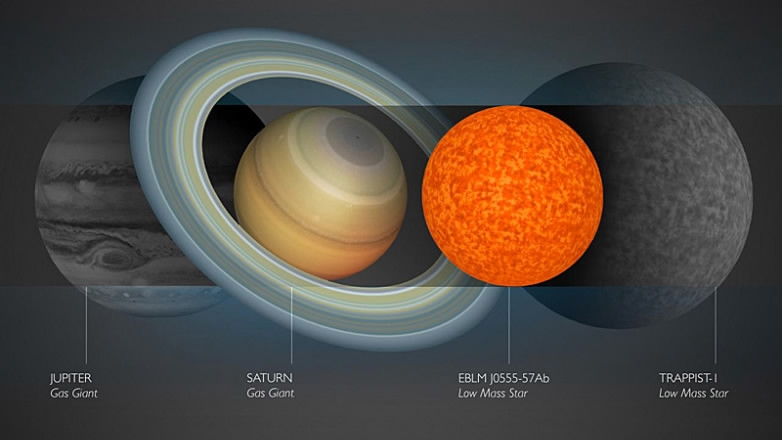
Tech & Sci
10:35, 13-Jul-2017
Astronomers discover smallest-ever star: Cambridge study

Astronomers have identified the smallest star ever measured, which is slightly larger in size than that of Saturn, according to a study released Wednesday by the University of Cambridge.
The star, located about 600 light years away, was discovered by a team led by astronomers from the University of Cambridge.
The newly-measured star, called EBLM J0555-57Ab, is part of a binary system, and was identified as it passed in front of its much larger companion, a method which is usually used to detect planets, not stars.
The star is likely as small as stars can possibly become, as it has just enough mass to enable the fusion of hydrogen nuclei into helium.

The star is about the size of the planet Saturn, which when compared to the Earth is still pretty big. /VCG Photo
The star is about the size of the planet Saturn, which when compared to the Earth is still pretty big. /VCG Photo
"Had this star formed with only a slightly lower mass, the fusion reaction of hydrogen in its core could have not been sustained, and the star would instead have transformed into a brown dwarf," said Alexander Boetticher, the lead author of the study, and a Master's student at Cambridge's Cavendish Laboratory and Institute of Astronomy.
Meanwhile, this newly-measured star has a mass comparable to the current estimate for TRAPPIST-1, an ultra-cool dwarf star that scientists reported in February. TRAPPIST-1 is surrounded by seven temperate Earth-sized worlds, but has a radius that is nearly 30 percent smaller.
"The smallest stars provide optimal conditions for the discovery of Earth-like planets, and for the remote exploration of their atmospheres," said co-author Amaury Triaud, senior researcher at Cambridge's Institute of Astronomy.
"However, before we can study planets, we absolutely need to understand their star; this is fundamental," Triaud added.
(Source: Xinhua)
Related stories:

SITEMAP
Copyright © 2018 CGTN. Beijing ICP prepared NO.16065310-3
Copyright © 2018 CGTN. Beijing ICP prepared NO.16065310-3